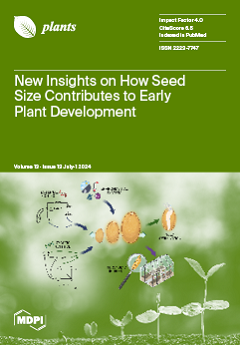Detailed anatomical features of bark are used and interpreted in plant taxonomy, phylogenetics, and other areas of plant science. However, the delicate nature of bark cells, combined with the difficulty of obtaining high-quality sections and reliable data, limits the potential for utilizing and
[...] Read more.
Detailed anatomical features of bark are used and interpreted in plant taxonomy, phylogenetics, and other areas of plant science. However, the delicate nature of bark cells, combined with the difficulty of obtaining high-quality sections and reliable data, limits the potential for utilizing and processing bark. In this study, the anatomical structure of the bark of 10
Quercus species growing in Yunnan Province, China, was characterized in detail. The results indicate that the anatomical features of the barks of 10
Quercus spp. show a certain degree of consistency. Specifically, sieve tubes are distributed in solitary elements or in small groups, mostly as compound sieve plates containing 2–8 sieve areas, suggesting that
Quercus spp. may occupy a conservative evolutionary position. Additionally, for the first time, this study reports the presence of simple sieve plates in the sieve tube elements of
Quercus phloem. Each sieve tube element has a companion cell on one side. The companion cell strands contain 2–7 cells. Axial parenchyma is diffuse, with parenchyma strands typically consisting of 4–7 cells; druses are present within chambered crystalliferous cells. Phloem rays are of two distinct sizes and often exhibit dilatation and sclerification, and the ray composition consists of procumbent cells. Sclerenchyma is composed of fibers and sclereids, both of which contain prismatic crystals. Most of the fibers are gelatinous fibers, which are distributed in discontinuous tangential bands of about five cells in width. Sclereids appear in clusters. The presence of sclerenchyma provides mechanical support to the bark, reducing the collapse of the phloem. Periderm usually consists of around 10–30 layers of phellem, and
Quercus acutissima and
Q. variabilis can reach dozens or hundreds layers. The phelloderm typically consists of from two to five layers, with
Q. variabilis having up to ten or more layers. The filling tissue of lenticels in all
Quercus species is nonstratified (homogeneous) and largely nonsuberized. Overall, this study enriches our comprehension of
Quercus bark anatomy, elucidating evolutionary patterns, functional adaptations, and ecological ramifications within this significant botanical genus.
Full article






